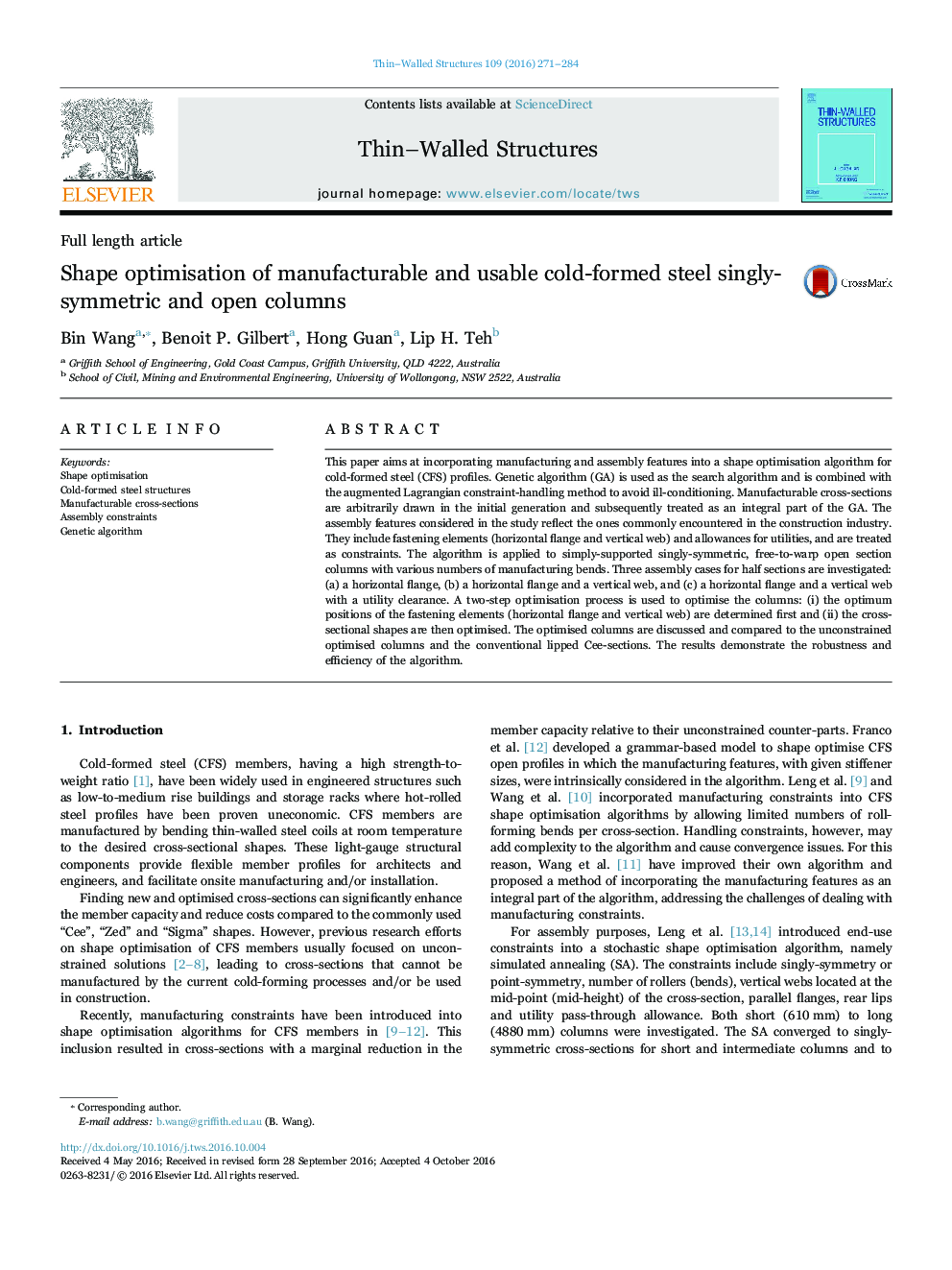| Article ID | Journal | Published Year | Pages | File Type |
|---|---|---|---|---|
| 4928743 | Thin-Walled Structures | 2016 | 14 Pages |
Abstract
This paper aims at incorporating manufacturing and assembly features into a shape optimisation algorithm for cold-formed steel (CFS) profiles. Genetic algorithm (GA) is used as the search algorithm and is combined with the augmented Lagrangian constraint-handling method to avoid ill-conditioning. Manufacturable cross-sections are arbitrarily drawn in the initial generation and subsequently treated as an integral part of the GA. The assembly features considered in the study reflect the ones commonly encountered in the construction industry. They include fastening elements (horizontal flange and vertical web) and allowances for utilities, and are treated as constraints. The algorithm is applied to simply-supported singly-symmetric, free-to-warp open section columns with various numbers of manufacturing bends. Three assembly cases for half sections are investigated: (a) a horizontal flange, (b) a horizontal flange and a vertical web, and (c) a horizontal flange and a vertical web with a utility clearance. A two-step optimisation process is used to optimise the columns: (i) the optimum positions of the fastening elements (horizontal flange and vertical web) are determined first and (ii) the cross-sectional shapes are then optimised. The optimised columns are discussed and compared to the unconstrained optimised columns and the conventional lipped Cee-sections. The results demonstrate the robustness and efficiency of the algorithm.
Related Topics
Physical Sciences and Engineering
Engineering
Civil and Structural Engineering
Authors
Bin Wang, Benoit P. Gilbert, Hong Guan, Lip H. Teh,
